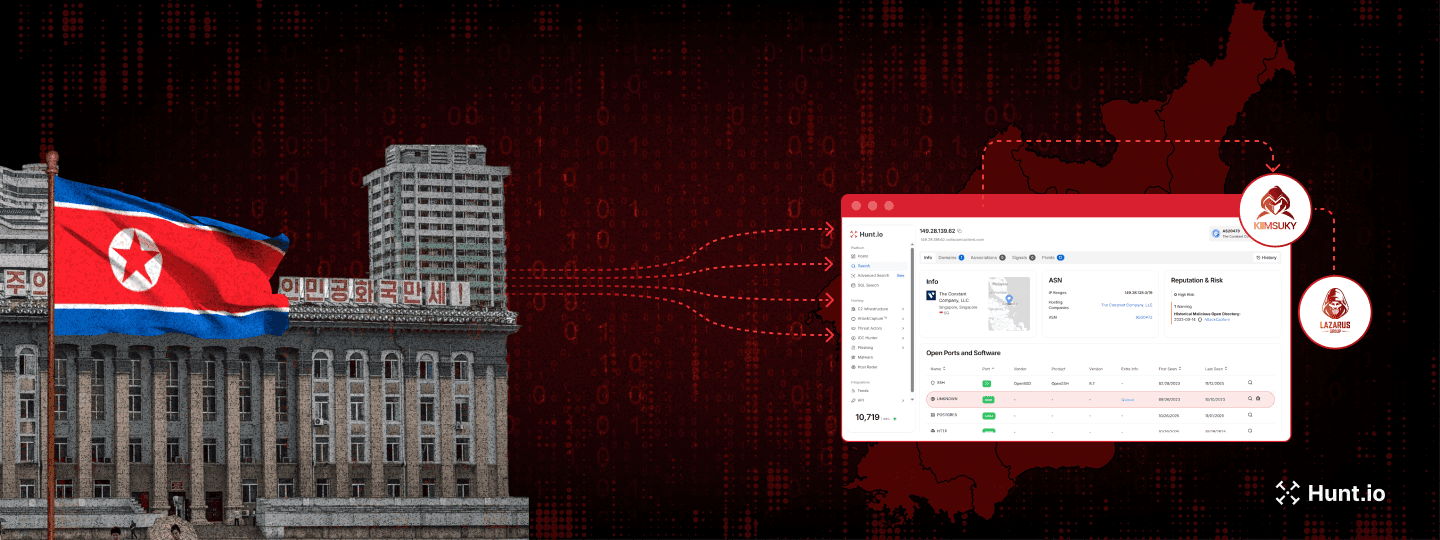One More Trip to The W3LL: Phishing Kit Targets Outlook Credentials
Published on
Published on
Published on
Mar 19, 2024
Mar 19, 2024
Mar 19, 2024




The W3LL Phishing Kit, a phishing-as-a-service (PAaS) tool, was identified by Group-IB in 2022. What makes the kit different from other services is a marketplace called W3LL Store, allowing users to choose the capabilities needed to complete their campaigns.
Primarily focused on Microsoft 365 credentials, W3LL utilizes adversary-in-the-middle (AitM) to hijack session cookies and bypass multi-factor authentication.
Hunt researchers discovered a phishing campaign underway that uses a fake Adobe Shared File service webpage to steal Outlook login credentials. The webpage tricks users into logging in to access supposedly shared files. Below, we'll briefly discuss our findings.
Open Directory
 Figure 1: Open Directory containing W3LL Phishing Kit Files
Figure 1: Open Directory containing W3LL Phishing Kit FilesHunt can identify exposed files on servers with open directory listings. Even if a server disappears from the internet, those files are available for download or preview on our platform. Warning: it's important to note that downloading such files should only be done in a safe environment.
Check it out: https://app.hunt.io/open-directory-crawler?host=https://192.3.137.252:443.
The presence of multiple folders named "OV6" in Figure 1 strongly indicates a W3LL phishing kit. W3LL typically places its control panel at "/OV6". These folders likely contain the core components of the phishing scheme, including obfuscated PHP files, which will be analyzed later.
Navigating to the HTML file within the /access folder leads to a phishing page imitating Adobe's Shared File service. The page lures the user to log in to retrieve a supposed file.
The spoofed Adobe shared file page uses the generic message "Your Contact has shared a file with you." This lack of personalization, compared to including the sender's name, might suggest the campaign is still under development. Phishing attempts often leverage personalization to appear more legitimate and increase the success rate.
 Figure 2: Screenshot of wfiles.html
Figure 2: Screenshot of wfiles.htmlWhen we tried logging in with fake credentials, the page sent a POST request to teffcopipe[.]com (5.63.8[.]243)/wazzy.php. This PHP file likely handles the stolen credentials on the attacker's end, potentially being the same script used by the W3LL phishing kit panel.
 Figure 3: Outlook login page & additional attacker infrastructure
Figure 3: Outlook login page & additional attacker infrastructureThe contents of OV6_ENCODED can be seen below. It's important to note that W3LL uses IonCube, a tool for encrypting/obfuscating PHP code, which is useful in slowing down research efforts.
 Figure 4: OV6_Encoded folder contents
Figure 4: OV6_Encoded folder contentsAs the name implies, config.php contains valuable details that provide insight into how the toolkit functions. A snippet is provided below.
 Figure 5: Snippet of config.php
Figure 5: Snippet of config.phpConclusion
We briefly shed light on a recent phishing campaign targeting Outlook credentials in this post. Cybercriminals impersonated the Adobe Shared File service to trick users into logging in and stealing their login information. Our analysis revealed additional infrastructure likely used for stealing credentials for sale or to send further phishing emails from a valid account.
Understanding how W3LL and similar kits operate is crucial to staying protected.
Here's what you can do:
Stay informed: Watch for future W3LL phishing campaigns targeting your organization.
Educate employees: Train your staff to identify suspicious emails and login pages. Look for generic messages, unexpected senders, and requests for login credentials on unfamiliar websites.
Consider Hunt: Explore security solutions like Hunt that can help identify open directories potentially exposing sensitive data and targeting organizations.
Ready to learn more? Apply for a Hunt account today and empower your team to stay ahead of cyber threats!
Network Indicators
| Open Directory |
|---|
| 192.3.137[.]252:443 |
| Additional Infrastructure |
|---|
| teffcopipe[.]com → 5.63.8[.]243 |
| /wazzy.php |
| Certificate: Let's Encrypt |
| Not Before: 2023-12-20 13:06:56 |
| Not After: 2024-03-19 13:06:55 |
The W3LL Phishing Kit, a phishing-as-a-service (PAaS) tool, was identified by Group-IB in 2022. What makes the kit different from other services is a marketplace called W3LL Store, allowing users to choose the capabilities needed to complete their campaigns.
Primarily focused on Microsoft 365 credentials, W3LL utilizes adversary-in-the-middle (AitM) to hijack session cookies and bypass multi-factor authentication.
Hunt researchers discovered a phishing campaign underway that uses a fake Adobe Shared File service webpage to steal Outlook login credentials. The webpage tricks users into logging in to access supposedly shared files. Below, we'll briefly discuss our findings.
Open Directory
 Figure 1: Open Directory containing W3LL Phishing Kit Files
Figure 1: Open Directory containing W3LL Phishing Kit FilesHunt can identify exposed files on servers with open directory listings. Even if a server disappears from the internet, those files are available for download or preview on our platform. Warning: it's important to note that downloading such files should only be done in a safe environment.
Check it out: https://app.hunt.io/open-directory-crawler?host=https://192.3.137.252:443.
The presence of multiple folders named "OV6" in Figure 1 strongly indicates a W3LL phishing kit. W3LL typically places its control panel at "/OV6". These folders likely contain the core components of the phishing scheme, including obfuscated PHP files, which will be analyzed later.
Navigating to the HTML file within the /access folder leads to a phishing page imitating Adobe's Shared File service. The page lures the user to log in to retrieve a supposed file.
The spoofed Adobe shared file page uses the generic message "Your Contact has shared a file with you." This lack of personalization, compared to including the sender's name, might suggest the campaign is still under development. Phishing attempts often leverage personalization to appear more legitimate and increase the success rate.
 Figure 2: Screenshot of wfiles.html
Figure 2: Screenshot of wfiles.htmlWhen we tried logging in with fake credentials, the page sent a POST request to teffcopipe[.]com (5.63.8[.]243)/wazzy.php. This PHP file likely handles the stolen credentials on the attacker's end, potentially being the same script used by the W3LL phishing kit panel.
 Figure 3: Outlook login page & additional attacker infrastructure
Figure 3: Outlook login page & additional attacker infrastructureThe contents of OV6_ENCODED can be seen below. It's important to note that W3LL uses IonCube, a tool for encrypting/obfuscating PHP code, which is useful in slowing down research efforts.
 Figure 4: OV6_Encoded folder contents
Figure 4: OV6_Encoded folder contentsAs the name implies, config.php contains valuable details that provide insight into how the toolkit functions. A snippet is provided below.
 Figure 5: Snippet of config.php
Figure 5: Snippet of config.phpConclusion
We briefly shed light on a recent phishing campaign targeting Outlook credentials in this post. Cybercriminals impersonated the Adobe Shared File service to trick users into logging in and stealing their login information. Our analysis revealed additional infrastructure likely used for stealing credentials for sale or to send further phishing emails from a valid account.
Understanding how W3LL and similar kits operate is crucial to staying protected.
Here's what you can do:
Stay informed: Watch for future W3LL phishing campaigns targeting your organization.
Educate employees: Train your staff to identify suspicious emails and login pages. Look for generic messages, unexpected senders, and requests for login credentials on unfamiliar websites.
Consider Hunt: Explore security solutions like Hunt that can help identify open directories potentially exposing sensitive data and targeting organizations.
Ready to learn more? Apply for a Hunt account today and empower your team to stay ahead of cyber threats!
Network Indicators
| Open Directory |
|---|
| 192.3.137[.]252:443 |
| Additional Infrastructure |
|---|
| teffcopipe[.]com → 5.63.8[.]243 |
| /wazzy.php |
| Certificate: Let's Encrypt |
| Not Before: 2023-12-20 13:06:56 |
| Not After: 2024-03-19 13:06:55 |
Related Posts:
Get biweekly intelligence to hunt adversaries before they strike.
Latest News
Hunt Intelligence, Inc.
Get biweekly intelligence to hunt adversaries before they strike.
Latest News
Hunt Intelligence, Inc.
Get biweekly intelligence to hunt adversaries before they strike.
Latest News
Hunt Intelligence, Inc.








